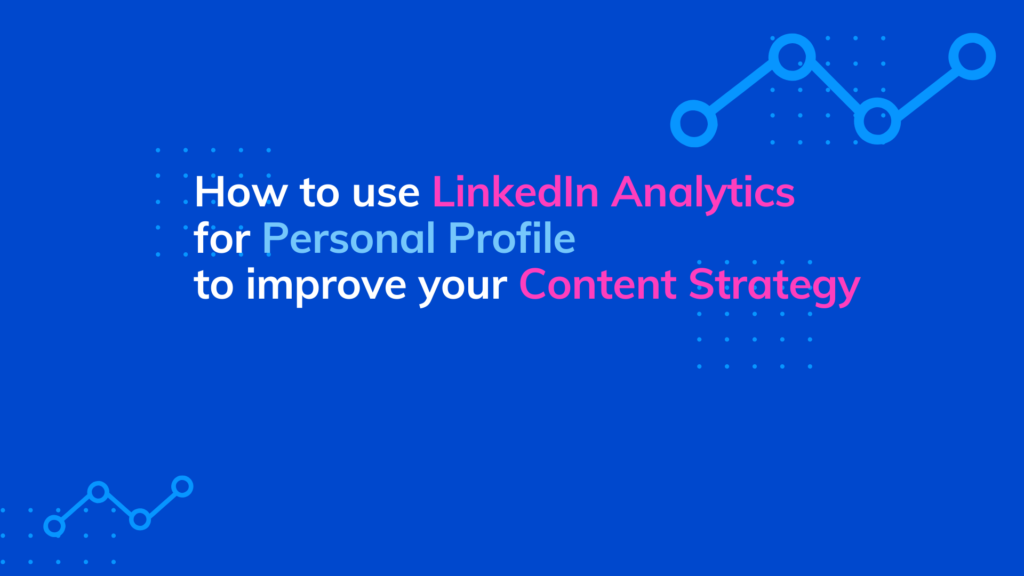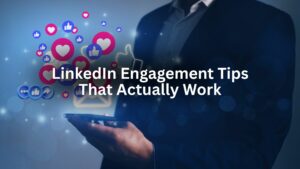Last Updated on 28 August 2024 by Wil Son
If you’re reading this you’ve probably started posting content on LinkedIn and now wondering if it’s good enough and what you can change in order to improve it.
Luckily for you, I’ve been there as well and saw all these tons of likes and comments under others’ posts while in comparison to their engagement rate my was almost zero.
So don’t worry, because in this article I’m going to give you insights that will help you improve your LinkedIn strategy and will reveal you the secret on how to go viral with your content and receive thousands of posts views!
Ready? Then, let’s dive right in!
How can Linkedin Analytics help you improve your personal Linkedin Strategy
As you already know, Linkedin is booming now and I believe that’s why you decided to boost your content activity on this platform. But to succeed with your goal: be it new customers’ acquisition or just personal brand building, you should have a strategy.
If you search for Linkedin strategy in google you will find almost similar articles full of standard suggestions to optimize your profile for SEO, update your profile image, create a more compelling headline, showcase your work, connect with others, and so on, and so on…
All of these are necessary, don’t get me wrong.
But I’m almost sure you already followed all these suggestions and right now is trying to figure out another thing like how to find out what will work precisely for you talking about the content.
And that’s exactly where analytics enters the game.
How to find Linkedin Analytics for your personal page
Does Linkedin have analytics for a personal profile?
This is the question that will arise first.
When it comes to company page analytics – everything is perfect cause this is where Linkedin gives us access to lots of data. But when it comes to personal profiles – it can be a big disappointment.
But let’s take a look at what metrics we have for our personal Linkedin profile and what you are able to track right away.
Linkedin Profile Analytics
If you open your homepage you will see two key metrics at the top. There you will see the number of people who have viewed your profile and number of views of your recent article or post.
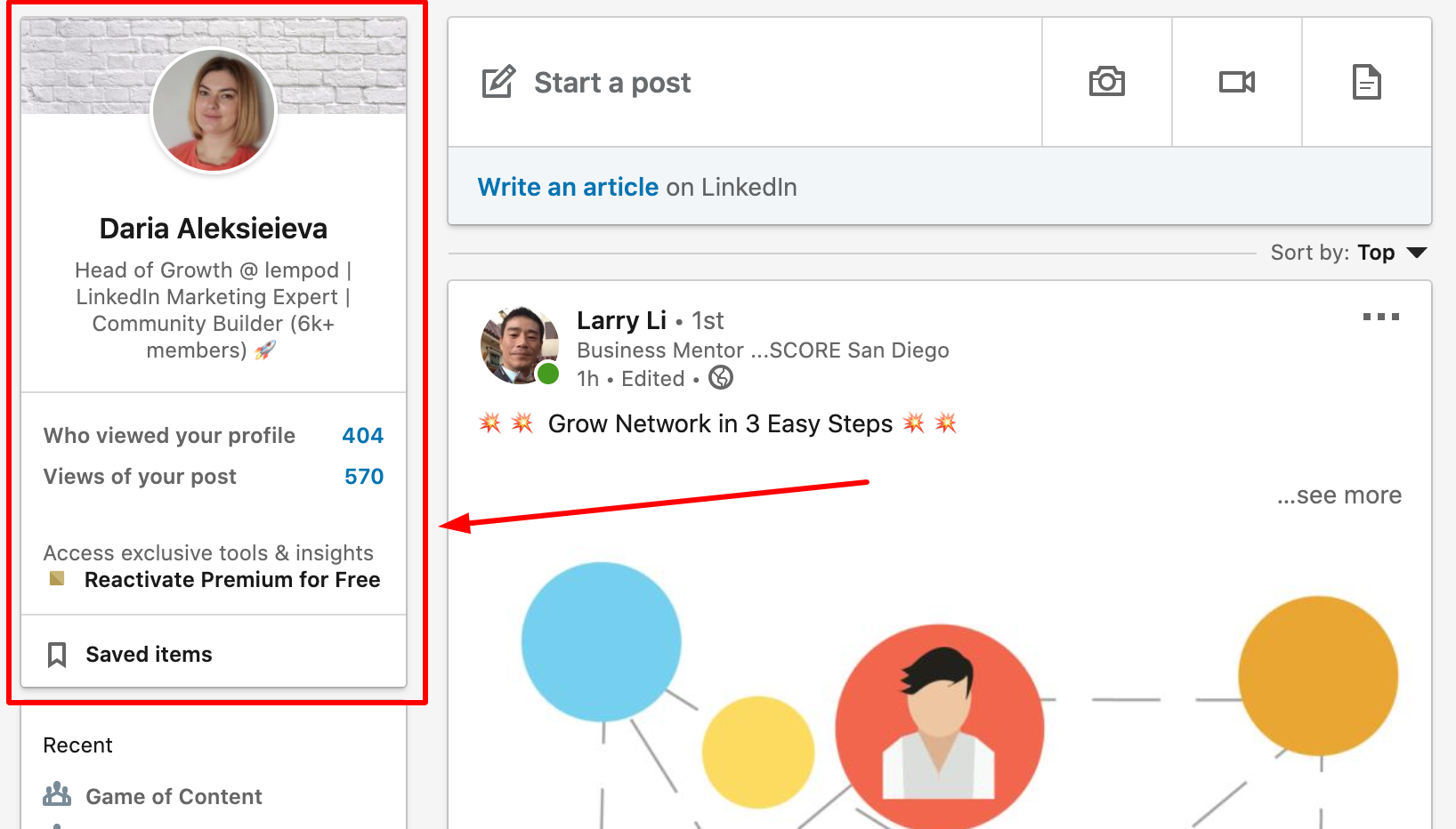
Found? Let’s take a closer look at the first one.
Who viewed your profile
By clicking “Who viewed your profile” you will see the overall number of your viewers for the last 90 days. And some data on who these viewers are and where they work below.
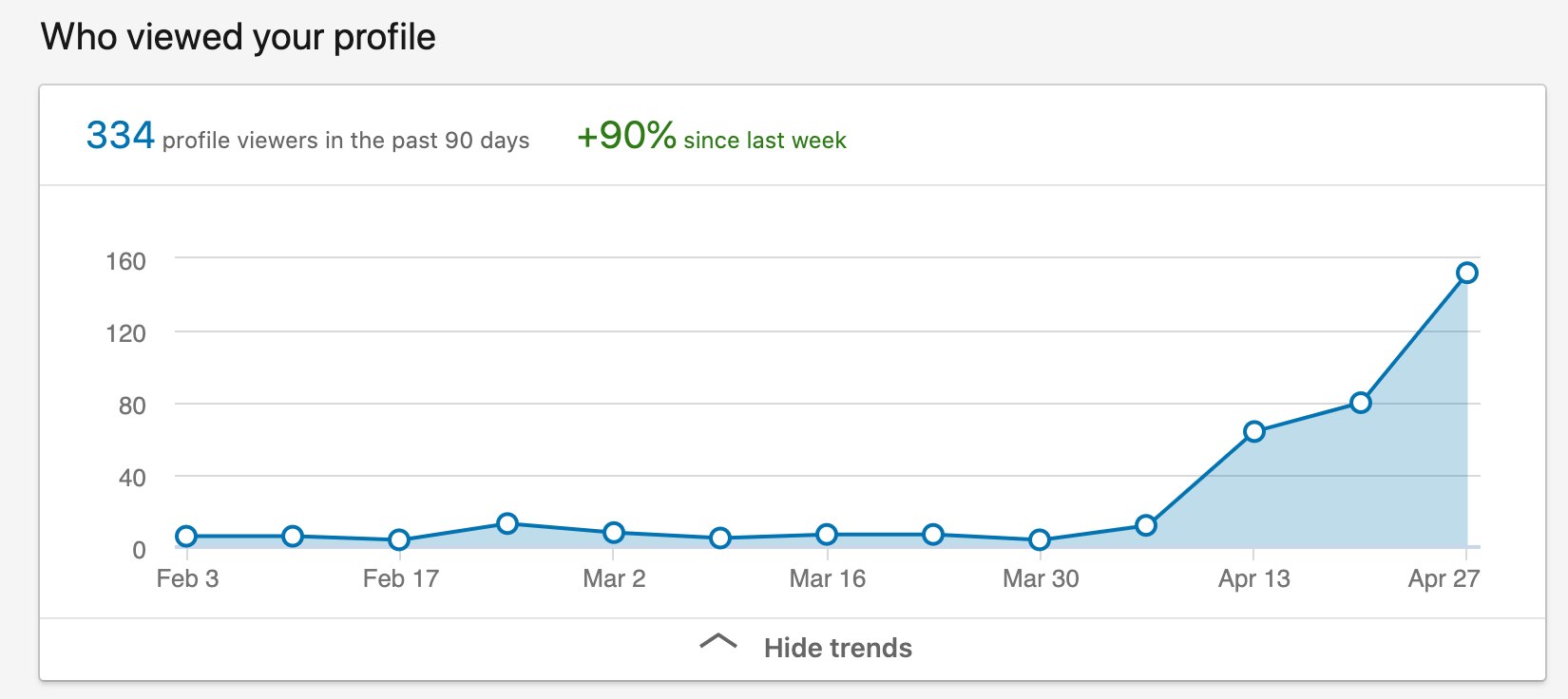
Based on the viewer’s privacy settings Linkedin allows you to see this info in three ways:
- LinkedIn user’s name, headline, location, and industry
- LinkedIn user’s semi-private profile characteristics such as job title, company, school, and industry
- just “LinkedIn Member” if the user switched on the private mode in his privacy settings.

Linkedin Activity Analytics
Now let’s check what analytics we have for our content.
Linkedin analytics for posts
By clicking on “Views of your post” you will see your page with all your activities: posts, articles, documents.
Once your post is viewed by at least 10 users you automatically get access to LinkedIn post analytics and now not only see the number of likes and comments but views stats as well.
For example, here is the stats for my latest post:

Click on your post views stats and you will see more data on who viewed your post (company, job title, and location).
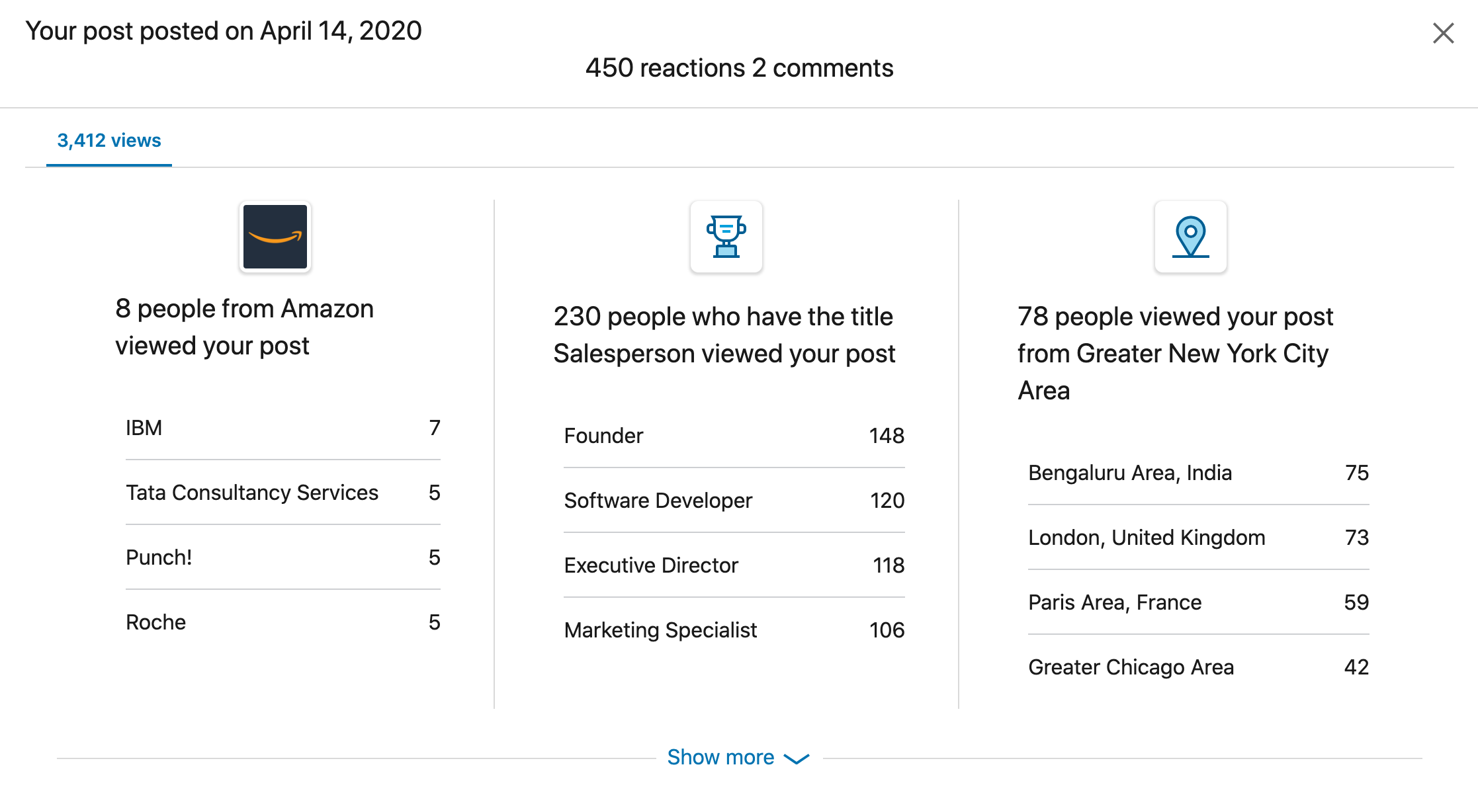
Post interactions
By clicking on the number of likes under your post you will see who liked it: name and headline that will help you understand who these people are.
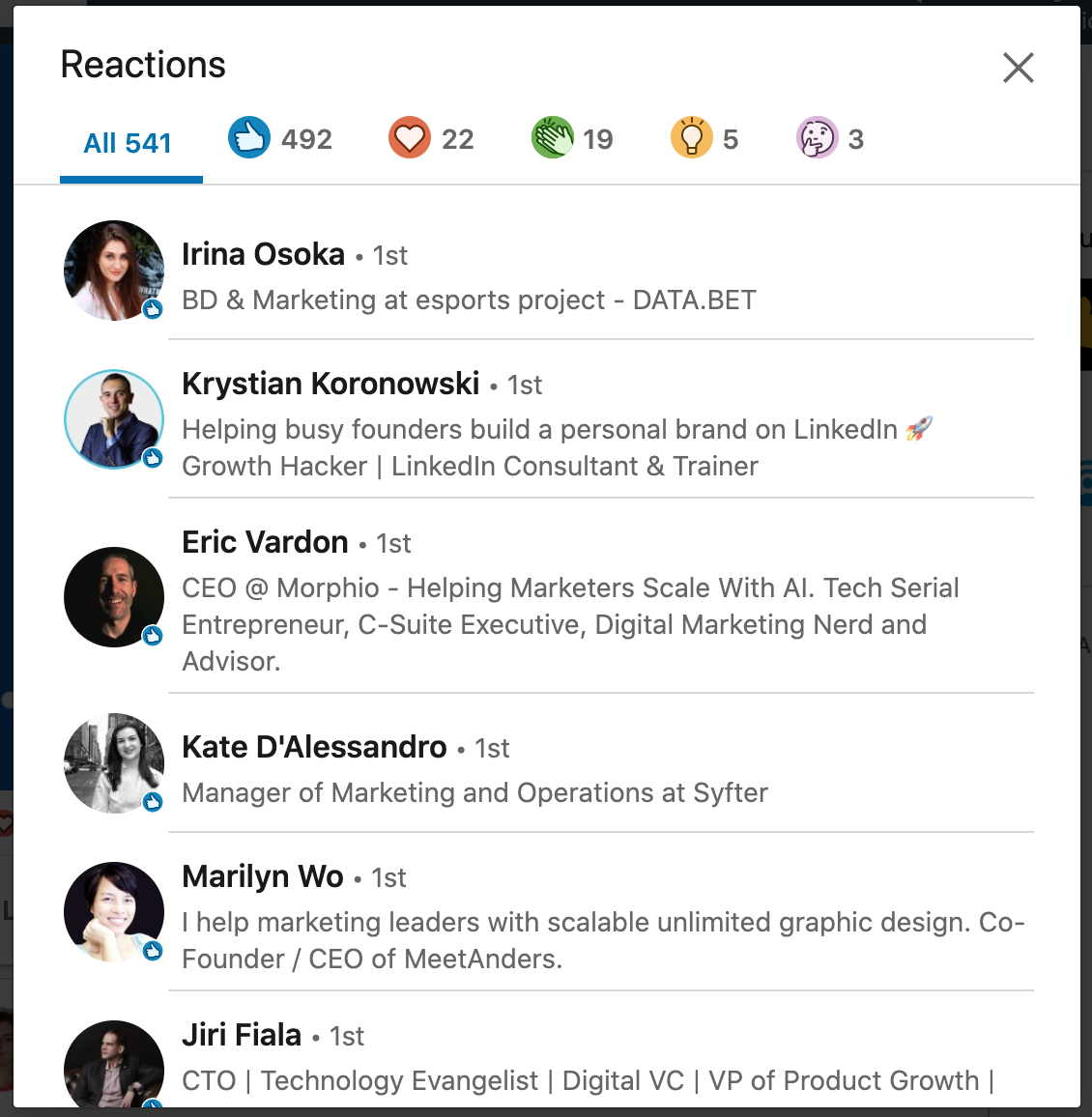
Linkedin Article Analytics (aka Linkedin Pulse)
As you know, besides posts, Linkedin now allows everyone to publish articles on their own platform.
Articles differ from posts in length (they are typically long-form) and are ideal for SEO (cause can be found through Google Search by keywords).

Now you might ask: How long do metrics for posts and articles stay on LinkedIn?
Keep in mind that your post analytics are available for only 60 days from creation. And your article analytics are available for 2 years.
Search Appearance
If you open your profile page and scroll down you will find “Your Dashboard”.
This is how it looks:

Besides the stats that we already saw earlier, you will also find here your weekly search stats.
By clicking on it you will be able to see the number of times your profile appeared in Linkedin search results during the last week, where your searchers work, what your searchers do, and keywords your searchers used to find you.
For example, this is my search appearance stats:

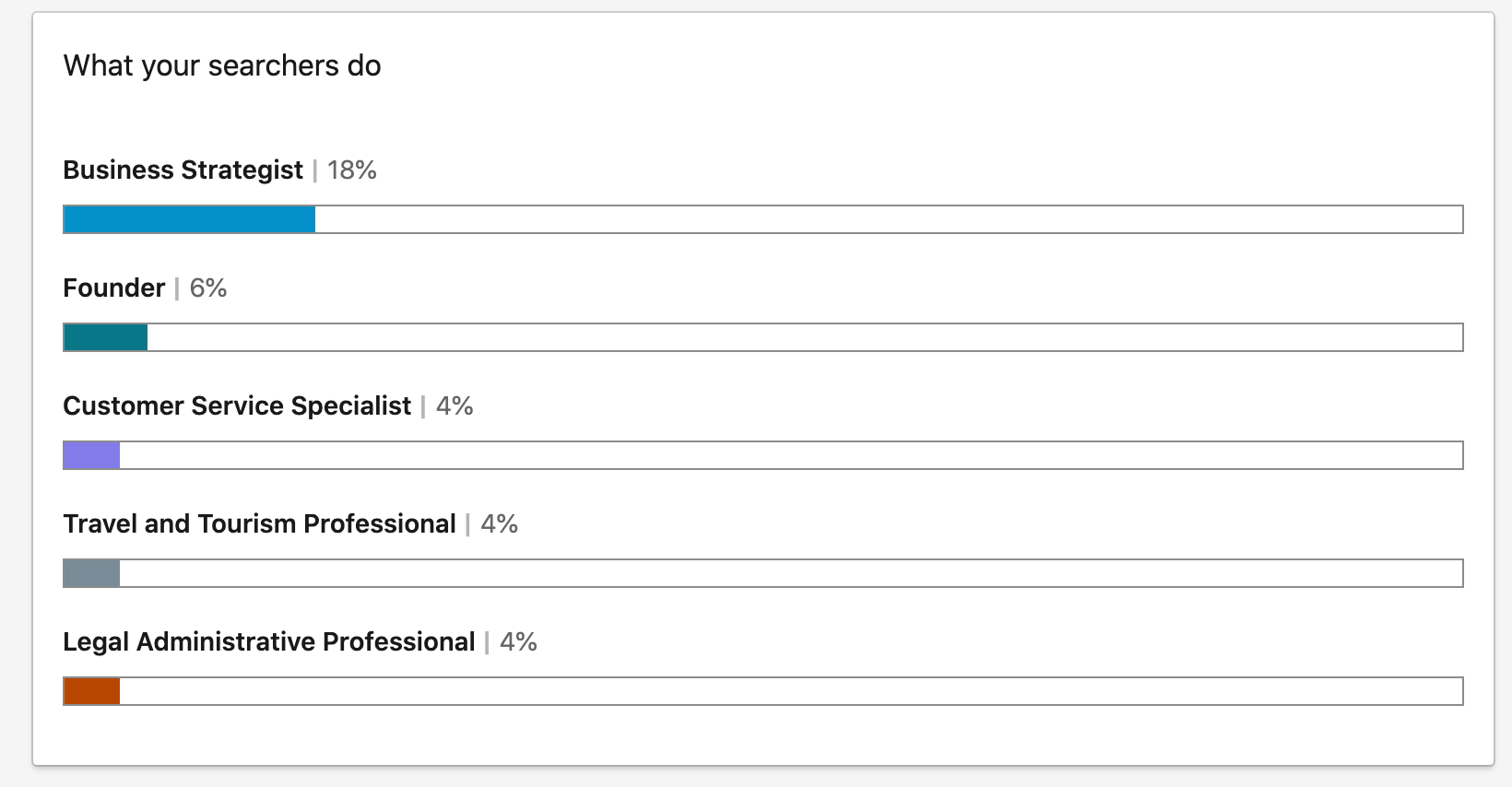
Based on these insights and keywords your searchers use to find you, you will understand whether your profile is optimized well enough.
Profile Followers
And the last, but not the least: the number of your profile followers.
This info you will be able to see by going to your activity page with all your posts and articles.
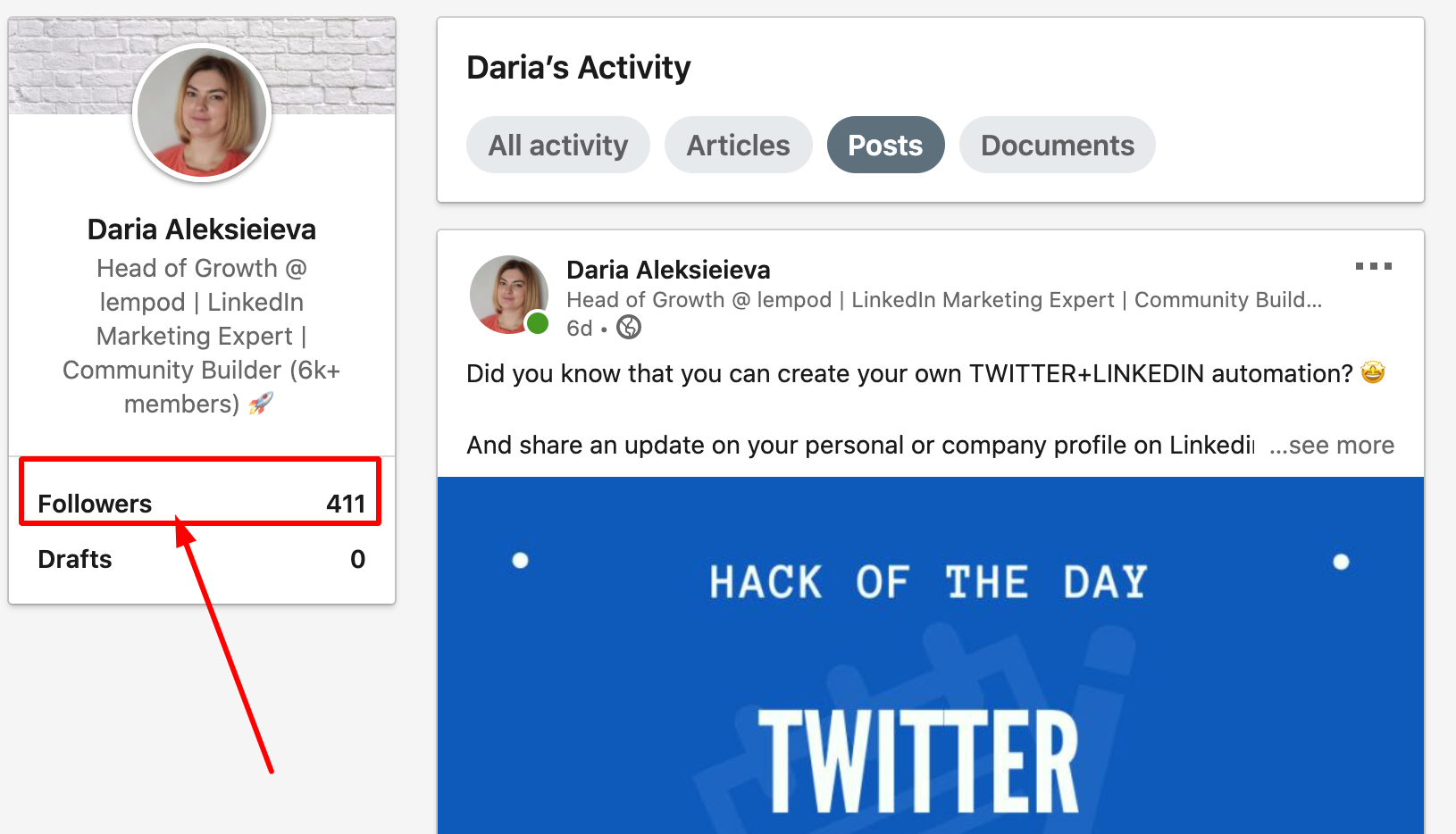
Click on it and you will see all your followers, all users that you follow.
This is how it looks:

And that’s pretty much it.
Of course, in comparison with in-depth analytics for company pages, Linkedin analytics for individuals is much more limited.
But still, these basic metrics of your personal profile can help you develop your strategy and it’s time to show you how to use this data in the right way 😉.
How to use Linkedin Analytics to optimize your content strategy and grow your personal brand
Now, when you know what data LinkedIn provides and you know where to find it you are probably asking yourself:
How exactly should I use Linkedin analytics for my personal page?
And it’s 100% correct questions to ask right now cause none of these metrics matter unless you know how to use them.
So it’s high time for me to tell you about the second ingredient of your successful LinkedIn content strategy: knowing your target audience and its preferences.
Before starting this guide it was expected that here I will begin to tell you to roll up your sleeves and prepare to conduct in-depth analysis yourself.
But luckily for you (and for me as well as I would have to do the same to show you some example 😄), I’ve found a tool that can do this automatically.
Linkedin Analytics Tool to discover the content your target audience loves
Meet Norns AI – the tool that will help you analyze everything about your target audience activity and start delivering tailored content.
Just a quick overview of how it works:
- you create a list of Linkedin profiles of your target audience (I’ve taken 300 profiles for better accuracy)
- scrape their LinkedIn profile URLs (this Phantombuster will help you)
- get raw data about your network’s activity
- send this data to Norns.ai
- receive your report
Now, let’s take a look at LinkedIn analytics report template that I’ve received from norns.ai:
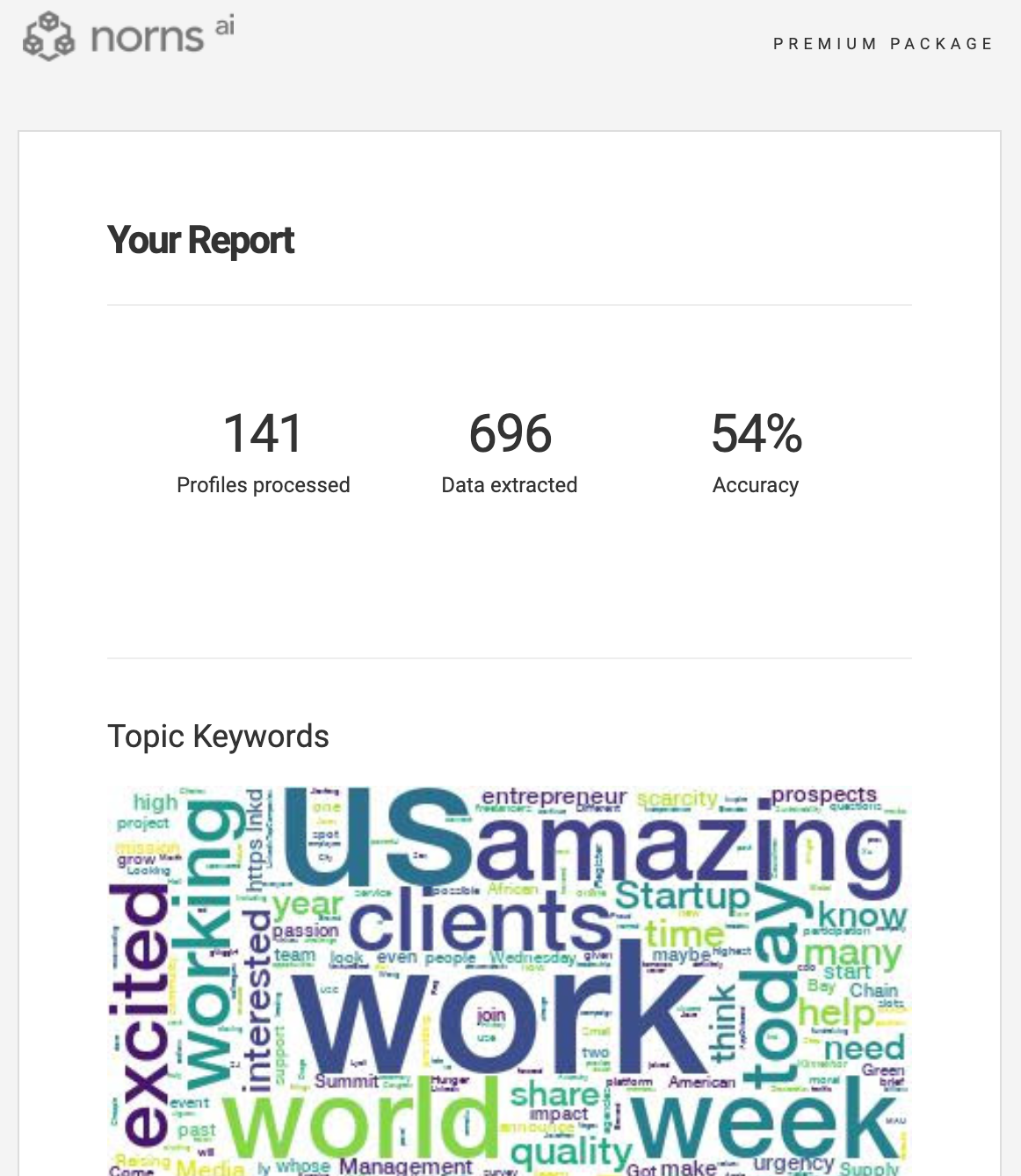

In short, it analyzed the latest activity of profiles I was interested in and delivered some interesting insights like the preferred size of the post, media type that will help me optimize my content strategy.
By using this LinkedIn analytics tool (even free version) you also will be able to see what’s resonating with people you target and adjust your content to their preferences.
And this, in turn, will help you receive more engagement and keep a positive record of your content metrics.
Cool, right?
So, finally, you are all set in terms of where to find your analytics and how to use it to improve your LinkedIn content marketing strategy.
But before you start posting your new optimized content with a big hope for a significant increase in your metrics – I have to confess.
I’m not sure if all mentioned above will help you reach your goal in the twinkling of an eye and most probably will take lots of time to show some results.
But there is one more secret ingredient in the success formula that can give you a huge marketing push.
And as promised at the beginning, I’m going to reveal you this ingredient so you can add it to your strategy and start gaining much more views on your content.
So if you are still reading this and ready to rock – my next and actually the last part of this article is for you!
How to get maximum from your LinkedIn content strategy
Let’s pretend you’ve already checked your metrics, received the report with insights on your target audience, analyzed everything, improved your content strategy, and now know WHAT and WHEN to post.
What to do next? How to receive your first initial engagement under your post that is so crucial in order to be boosted by the LinkedIn algorithm and seen by more people?
There are two ways:
- If you have a massive following (i.e. 10.000+ followers) chances that your followers will see your post and engage are huge (cause they follow you for some reason, right?).
But I’m almost sure it’s not your case (and to be true my neither yet 😅), so you can go straight to the second way. - Use Linkedin Engagement Pods
Linkedin engagement pods are groups of people that decided to get together in order to help each other with engagement: give likes and comments.
These pods are free and very often members there have similar interests and audiences.
But there is one problem: the process of liking and commenting takes looots of time. So, unfortunately, very often many members just stop doing it.
That’s why we created lempod – our magic tool to boost your Linkedin marketing efforts.
This is how it works and how it can help you receive your initial engagement:
1) You join relevant pods (we have thousands of pods so I’m sure you will find pods on your interests)
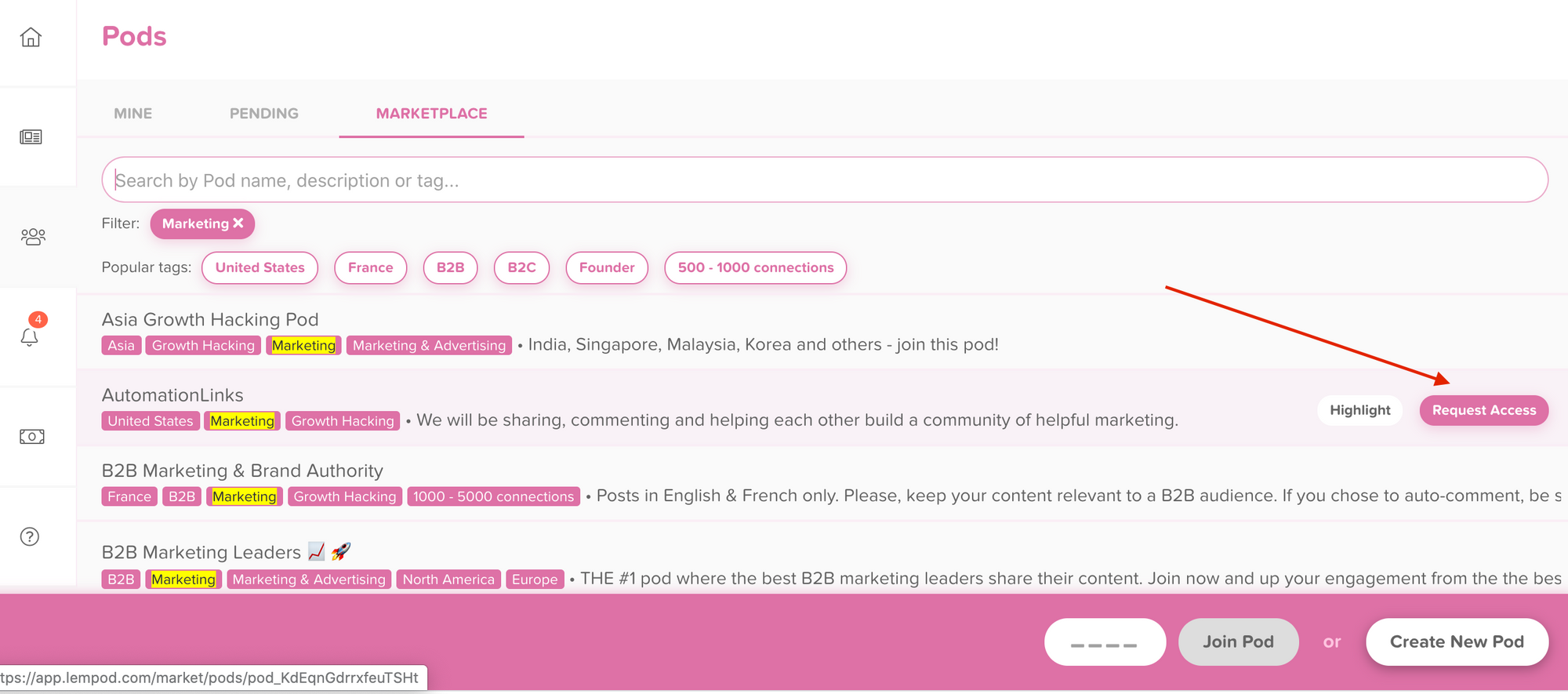
2) You add your LinkedIn post to pods you’ve chosen
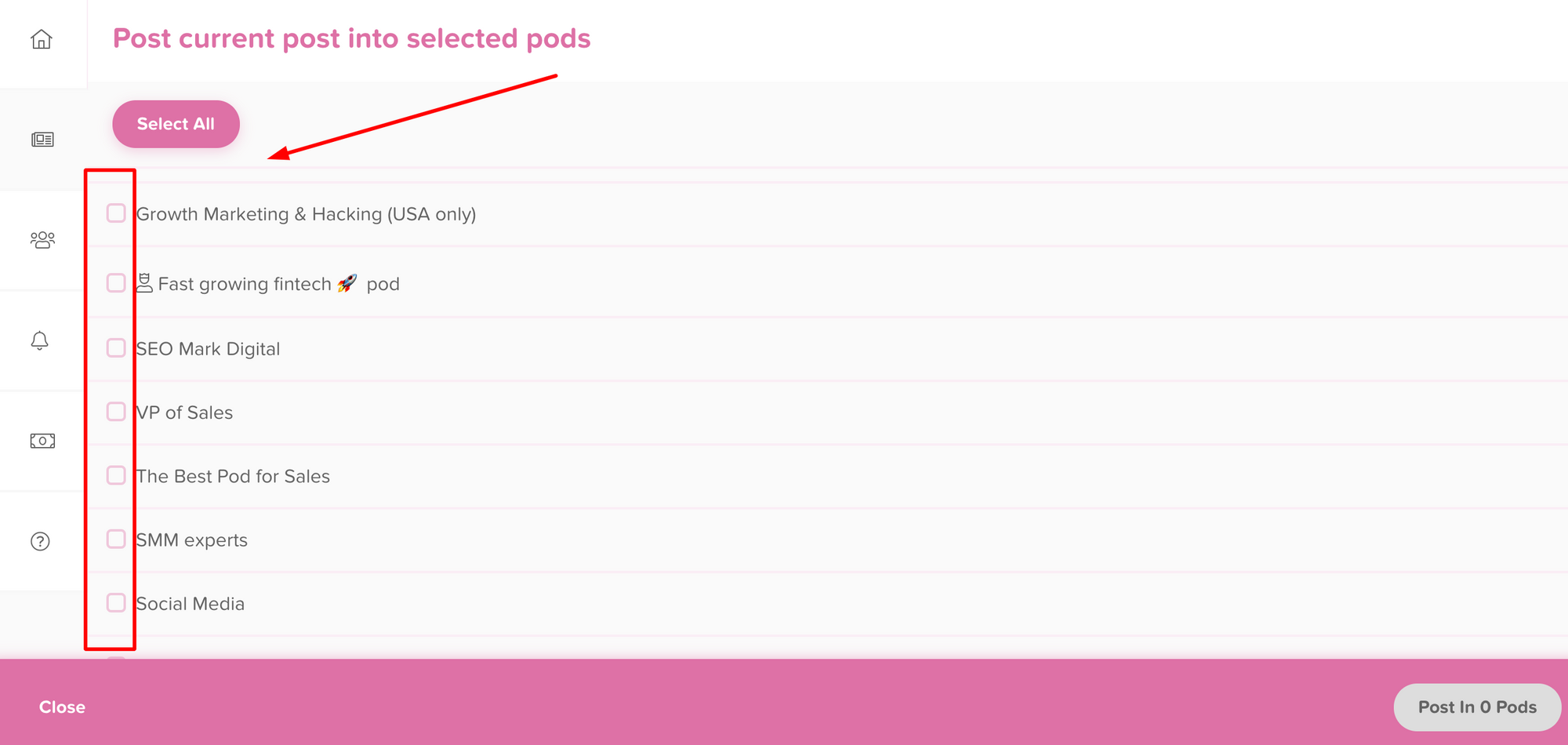
3) And voila, you start receiving likes and comments under your post
As you can see, it’s as easy as 1-2-3!
Everything is automated, so you won’t waste lots of time asking people to like and comment on your post anymore and will be able to focus on what matters most – your content strategy itself.
If you’re ready to start right away, here’re the pods that are trending now and secret codes to access them easily:
SaaS Haven – All things SaaS 🚀 – The secret code is: 6129
Growth Hackers – Worldwide 🌍 – The secret code is: 6031
High-level Marketing Club 👑 – The secret code is: 1042
Startup Factory – Achieve Fast Startup Growth 🚀 – The secret code is: 3348
The HR Mastermind – Everything about Human Resources 🤓 – The secret code is: 4763
The bottom line
Finally, you know all 3 ingredients of your Linkedin success:
- you know what metrics you can and should track
- you know your target audience preferences
- you know how to receive your initial engagement for your optimized content and boost your reach
By adding all of them to your Linkedin content strategy – the results will not keep you waiting.
So I hope you enjoyed this article and will start to put my success formula in practice right away!
